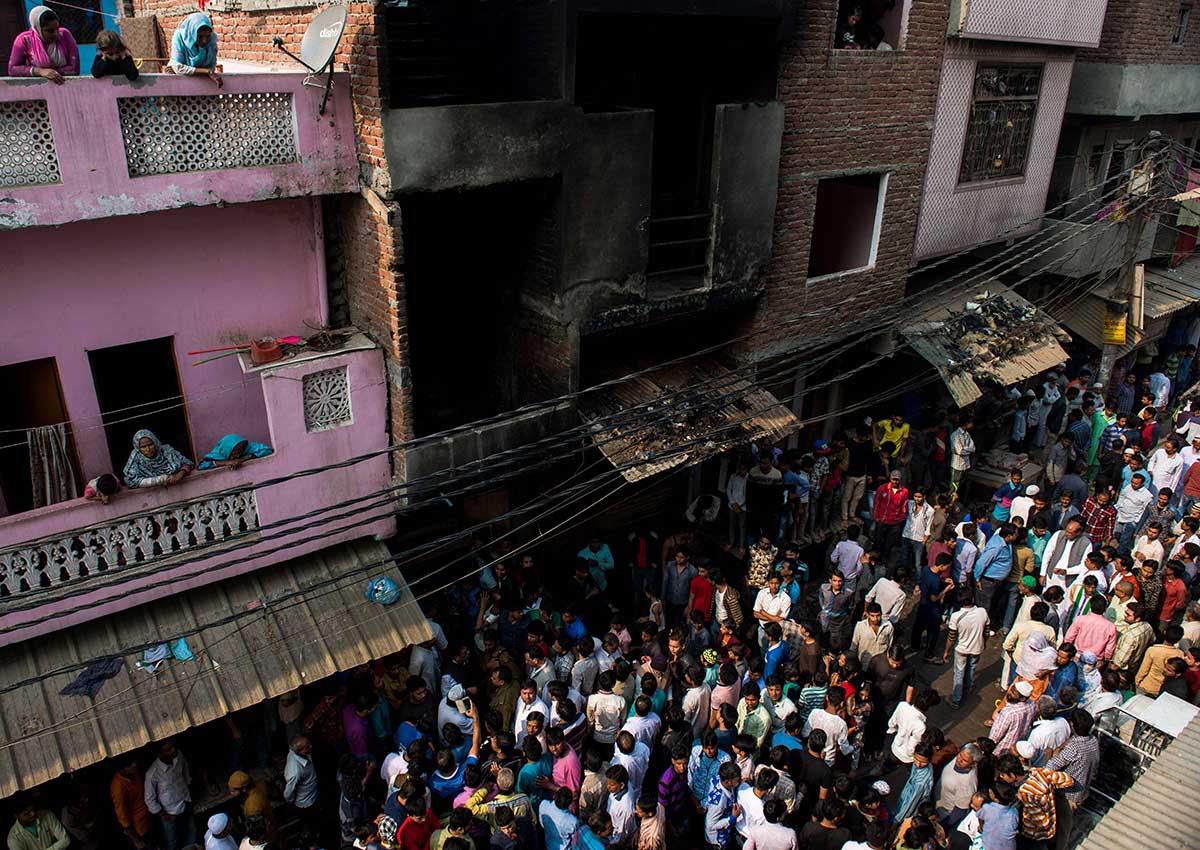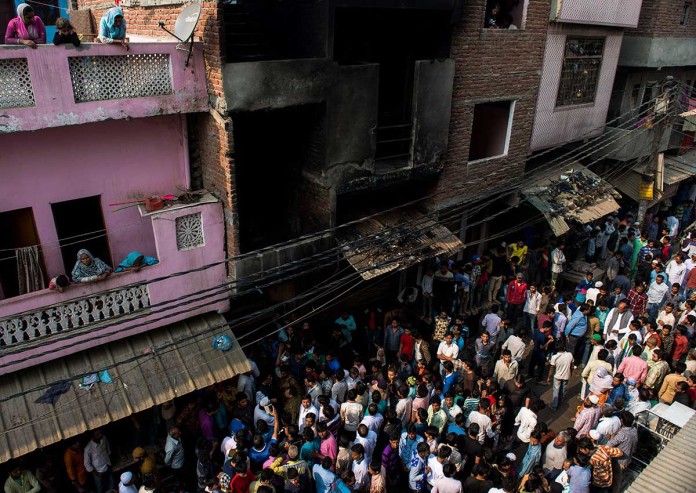GHAZIABAD, India – Thirteen workers died in a fire at a suspected illegal garment factory on the outskirts of the Indian capital early Friday as they slept in the workshop.
The blaze started in the early hours of the morning on the ground floor of the narrow residential building, which was being used to make fake leather jackets, on the eastern edge of New Delhi.
Residents rushed to the factory after they heard screams from those trapped inside as the fire quickly spread to the first floor where most of the workers were sleeping, eyewitness Shahabudin Ali said.
“We started dousing the fire ourselves with buckets and garden pipes,” he said.
“The fire department officials reached only two hours after the fire.” The police confirmed that 13 people died, adding that the fire was likely caused either by a short circuit or a cigarette.
“The fire broke out at a factory in a residential area of Sahibabad around 4:30 am in the morning. Thirteen people, who were sleeping there have died and another two or three people are getting treated at the hospital,” Bhagwat Singh, local police spokesman told AFP.
Police superintendent Salman Taj said that three of the dead were burnt to death while the others died of smoke inhalation.
Residents and a local fire officer said that two of the workers survived by jumping from the building’s balcony.
“The two of them woke up by chance and say they screamed for others to wake up while running towards the terrace but others didn’t wake up, perhaps it was already late,” local fire officer Abbas Hussain said.
Hussain described piles of leather stacked in the building’s narrow staircase and cramped workshop, adding that the factory was most likely illegal.
“From what we see, there was nothing proper and the factory must surely not have been a legal one but we can say for sure only after a proper investigation,” Hussain said.
Police superintendent Taj confirmed that the two building owners had been detained.
The fire is yet another blight on India’s poor record for workplace safety where deadly accidents are commonplace.
Residents described the neighbourhood with its maze of narrow streets as being dotted with illegal factories, which mostly employ underpaid migrant workers.
Either side of the charred factory were residential buildings with shops on the ground floor.
The front of the workshop had been shuttered with a metal grill similar to the neighbouring shop fronts, residents said, which had prevented the workers from escaping when the blaze began.
Nawaz Alam, a migrant worker at nearby jeans workshop, said he had little choice but to work in an illegal factory.
“We are not paid well and have to live in inhuman conditions in the factories to save money,” Alam said.
“I would prefer to work in a proper factory but can’t get a job.” Eight workers were killed last month in a huge explosion at a fireworks factory in the southern state of Tamil Nadu while a massive blaze in a firecracker workshop killed 15 people in May 2014 in central Madhya Pradesh.
A fire at a factory where leather bags were being stitched killed six workers in November 2013 in New Delhi. Some of the victims were trapped inside the building and burnt beyond recognition.
South Asia’s lucrative garment industry has a particularly alarming safety record, with watchdogs saying safety rules are routinely flouted.
A huge fire triggered by a boiler explosion at a packaging factory just north of the Bangladeshi capital Dhaka left 25 people dead in September.
In November 2012, at least 111 workers were killed when a devastating fire engulfed a nine-storey garment factory outside Dhaka.
The accident was followed by an even bigger disaster six months later when 1,138 people died after a clothing factory complex collapsed, trapping more than 3,000 workers.
The Rana Plaza tragedy triggered international outrage and put pressure on European and US clothing brands to improve pay and conditions at the factories that supply them.






